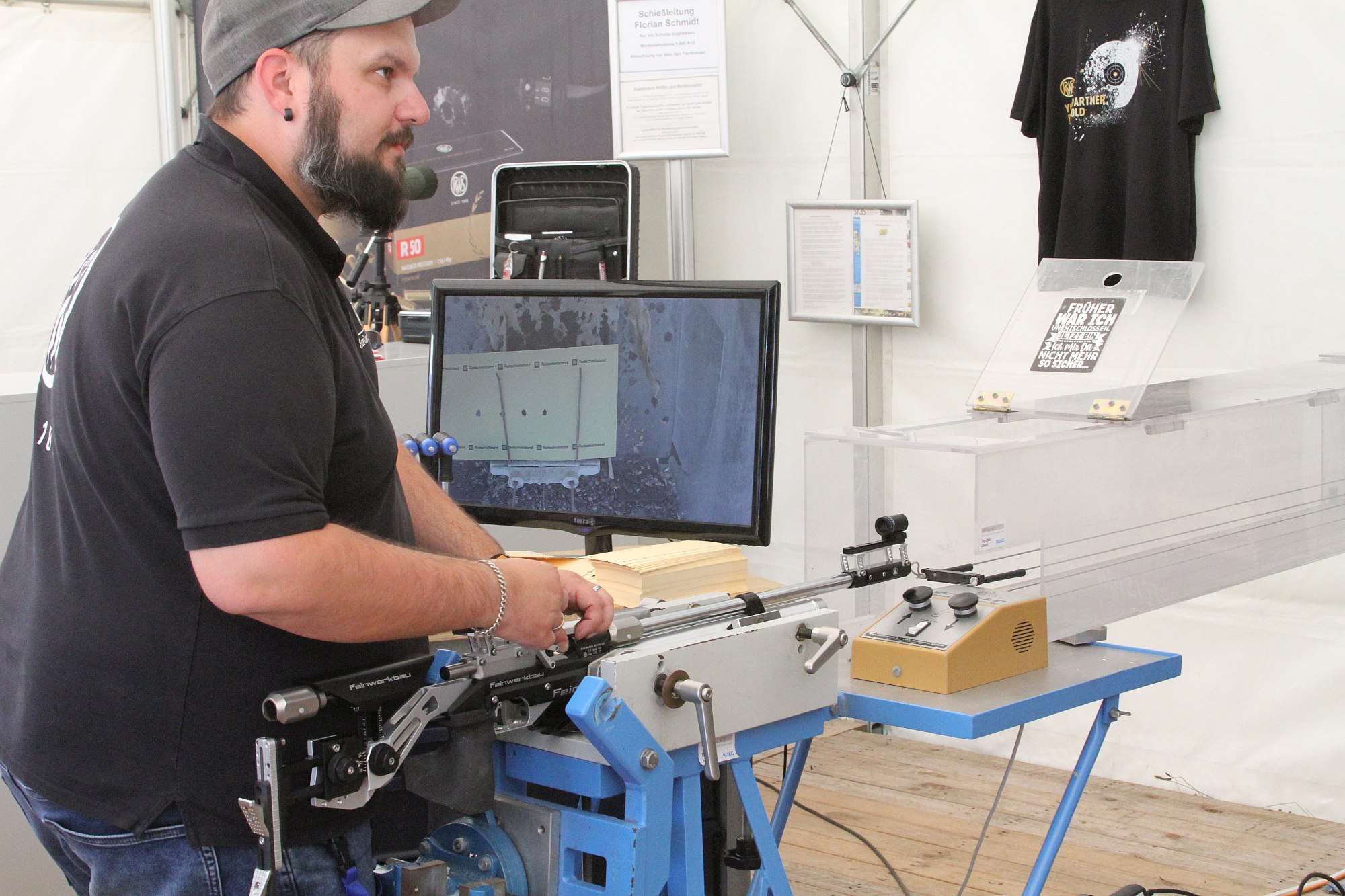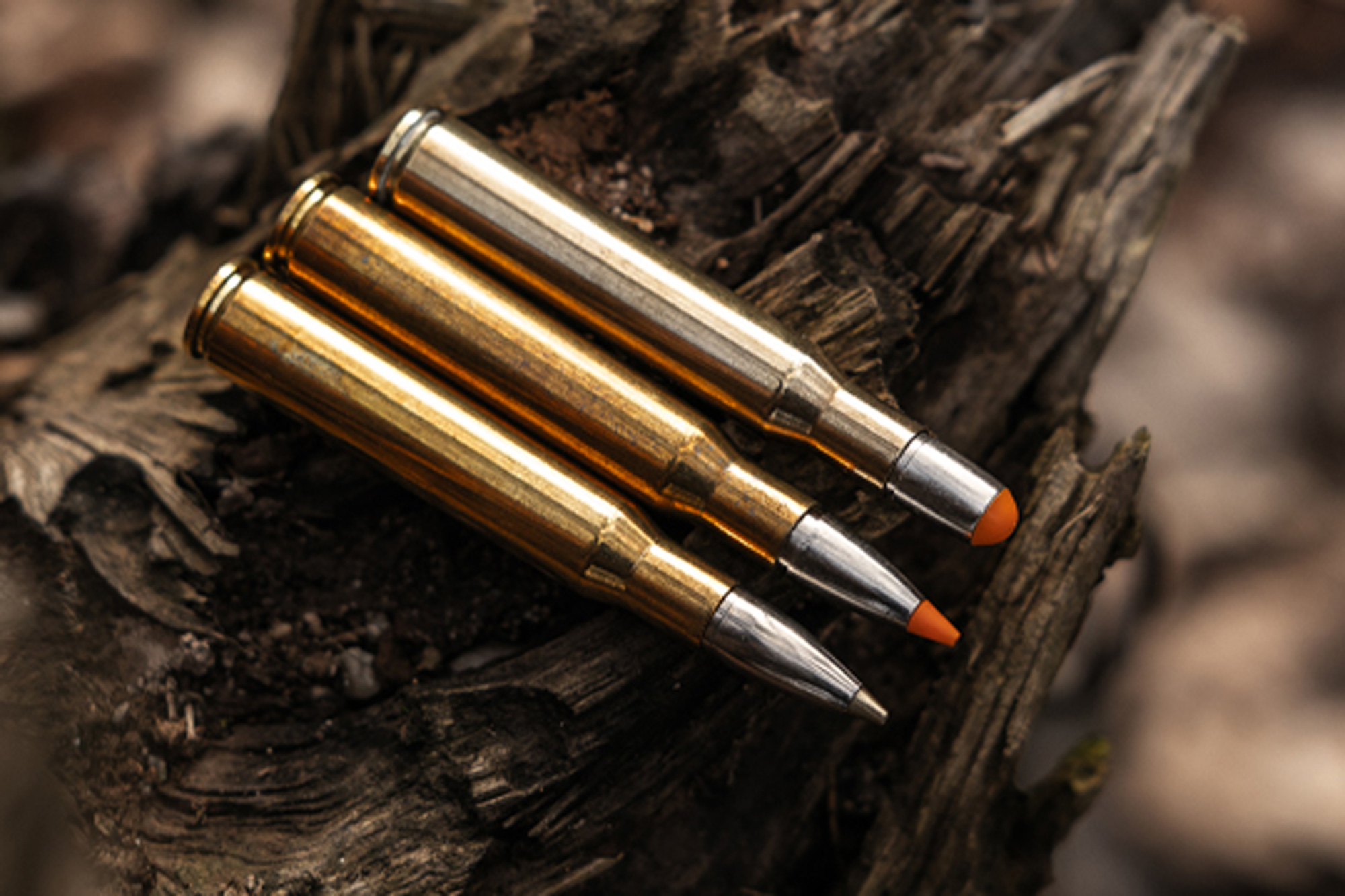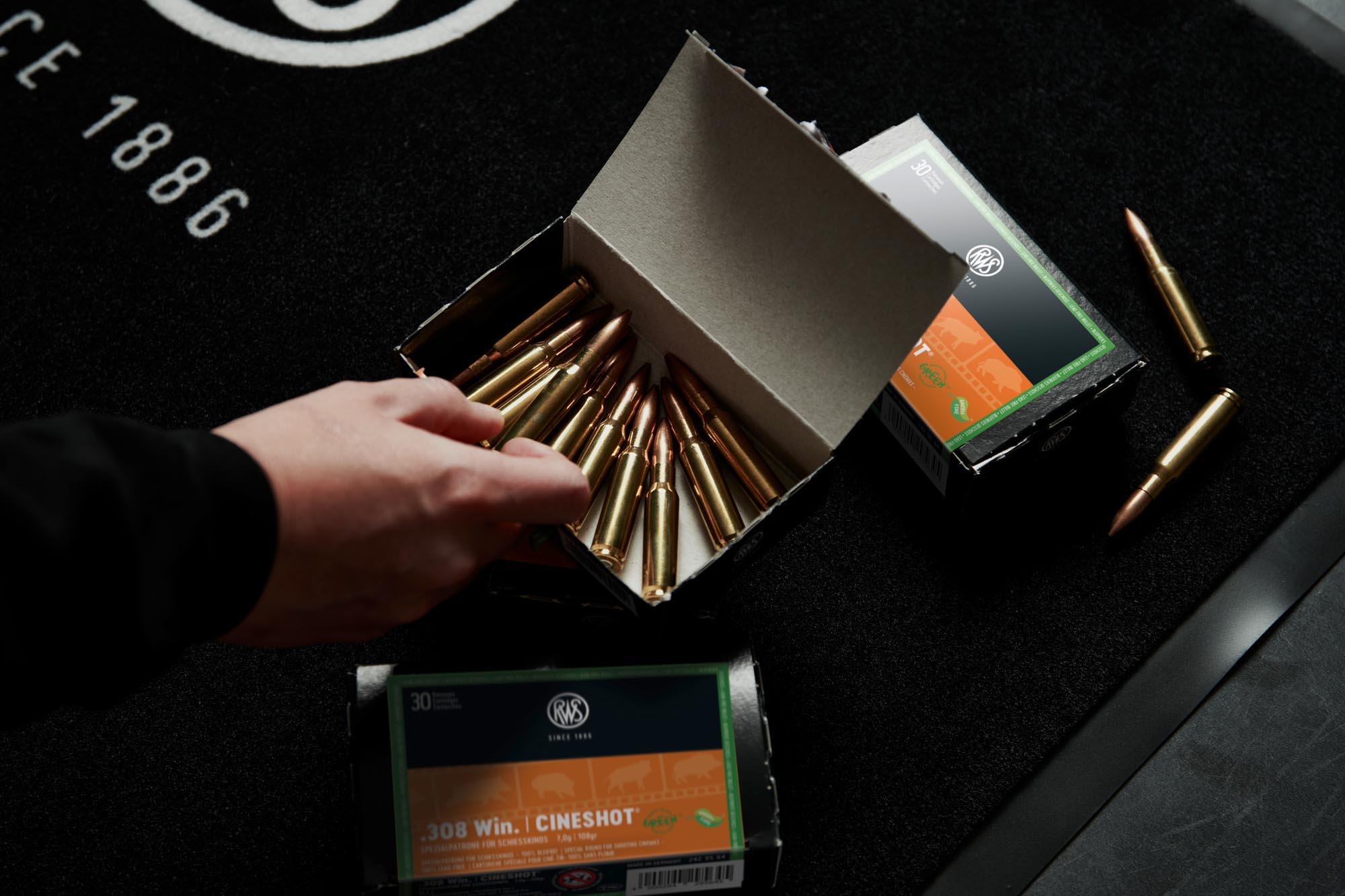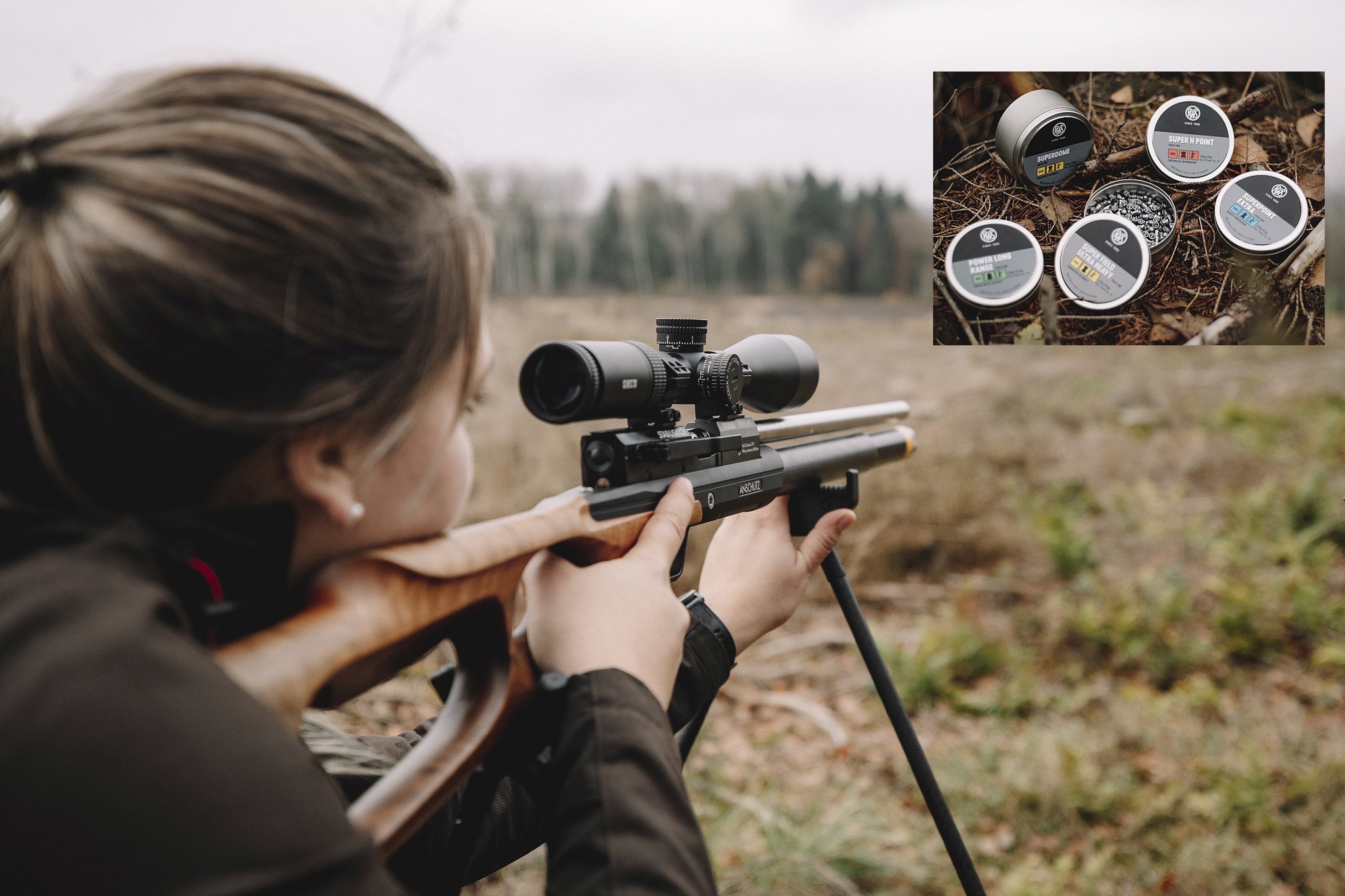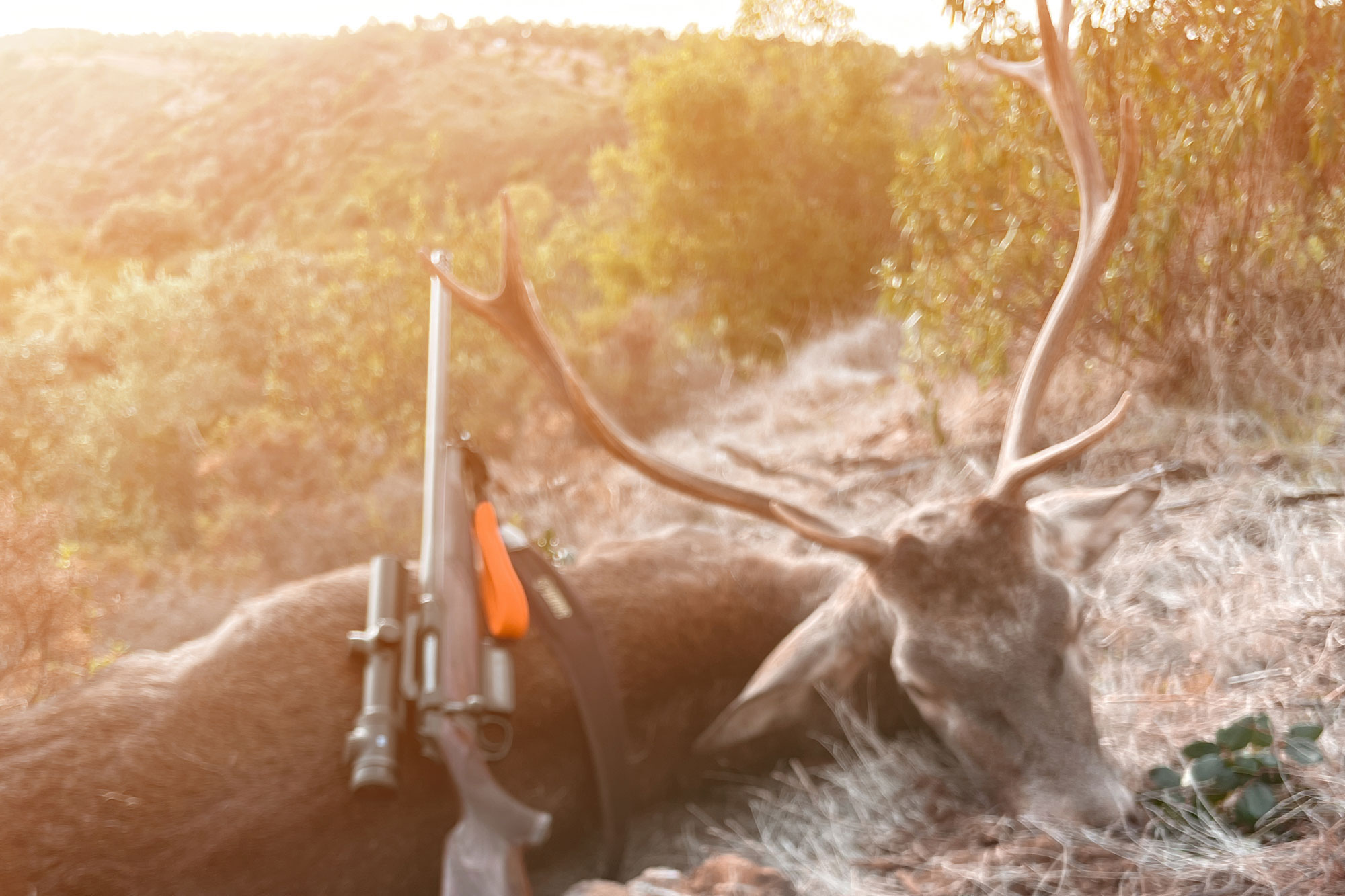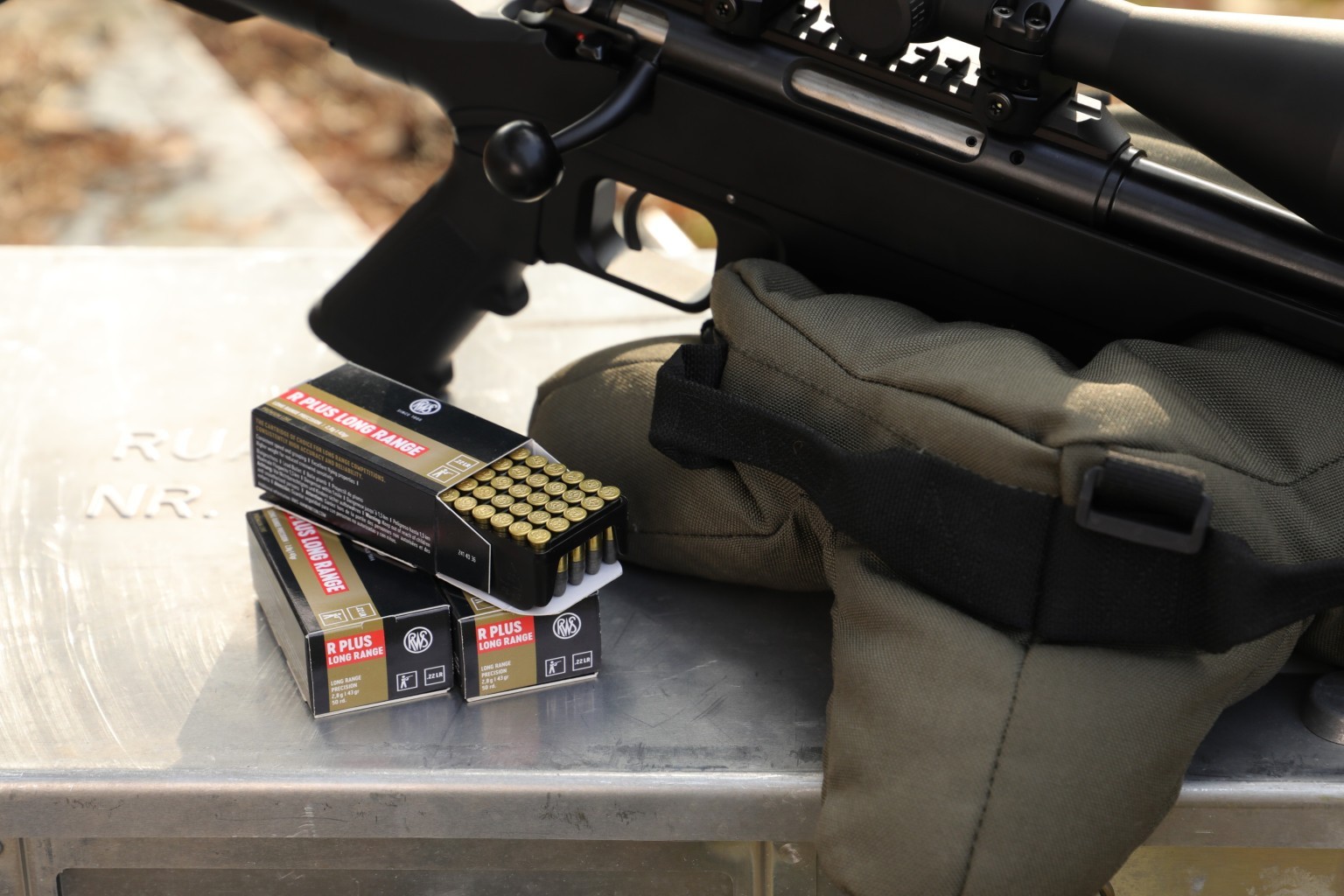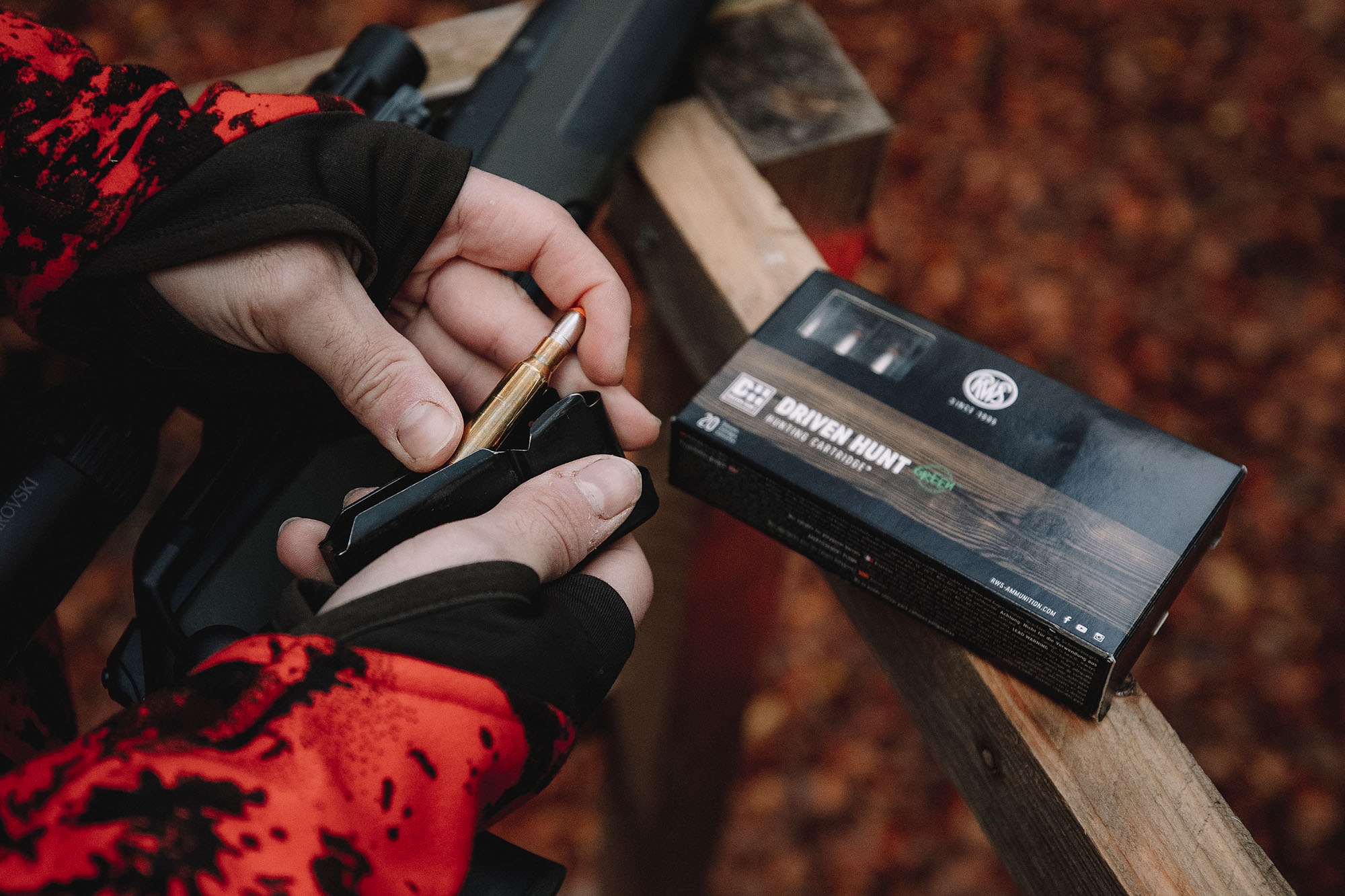With the lead-free HIT bullet, the leading German ammunition manufacturer RWS reacted very quickly to the lead problem in rifle bullets initiated by the EU. Since then, a lot has happened and not only has the available range of calibers been constantly expanded. Time has not stood still for the factory cartridges supplied with HIT either. Proof of this is the SHORT RIFLE cartridge series specially designed for silenced rifles with short barrels, in which the RWS HIT bullet is used alongside the DRIVEN HUNT, the SPEED TIP PROFESSIONAL and the EVOLUTION GREEN. The HIT is a lead-free, monolithic, dimensionally-stable copper-based expanding bullet. The RWS HIT uses the TC-Tip (Twin-Compression-Tip), a ballistic tip with improved aerodynamic properties, in addition to a hollow point known at RWS as the ACC (Active Crater Cavity), which is designed to ensure that the bullet mushrooms safely and quickly with a high shocking effect, even at long ranges. Thanks to a residual weight of around 99%, the solid copper bullet achieves deep penetration and a certain exit wound – even after striking bone! Before we go to the test shooting range together, you should know the following basic information about the RWS HIT.
What is the fundamental difference between a lead bullet and a monolithic copper bullet such as the RWS HIT?
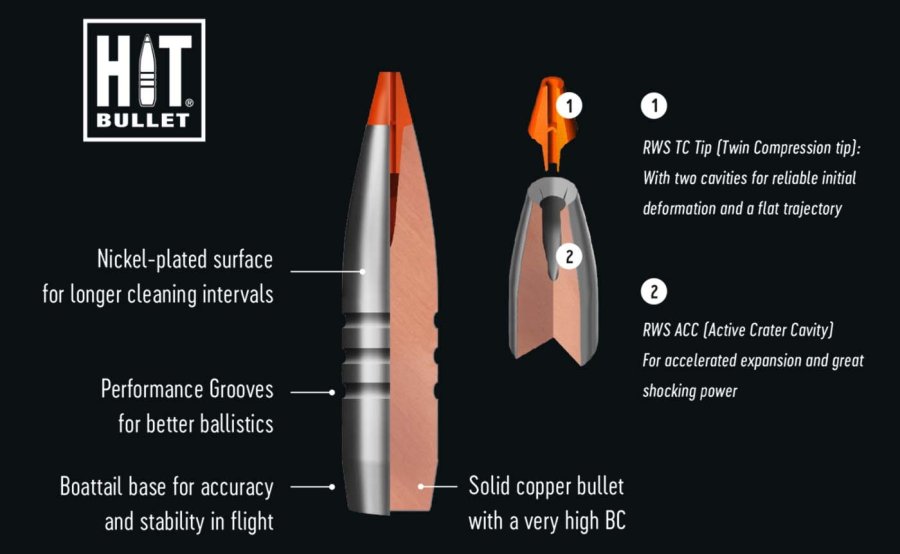
Lead bullets usually have a jacket made of tombac or mild steel, which is intended to protect the barrel from the deposits of the very soft lead, but also the lead core itself. The jacket also has an effect on the target ballistic properties – for example, the bond with the jacket of a so-called bonded bullet (composite core bullet) ensures a high residual weight. The HIT bullet, on the other hand, is a monolithic bullet, as already mentioned. The actual bullet therefore consists of only one material, in this case copper, even if it has been coated with a thin layer of nickel to improve bullet properties. The advantages of copper lie in its physical properties. Copper has a much higher melting point and is also much harder than lead. As a result, higher residual weights can be achieved in percentage terms than with lead bullets, even compared to composite bullets where the jacket is firmly bonded to the lead core. However, copper is also lighter than lead and a higher velocity is required to deliver the same energy to the target as a lead bullet with the same dimension.
The lead-free monolithic copper bullets also differ from the lead-based designs in the manufacturing process in that they are usually pressed and deep-drawn from a rod before being joined to the jacket. In contrast, the copper-solid bullets are normally moulded using machining processes in modern and extremely precise CNC machines.
Why are more and more hunters turning to the RWS HIT?
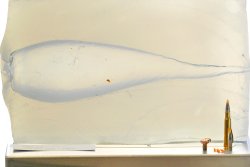
In most European hunting grounds, the usual hunting ranges are less than 200 meters. As the HIT can cover these distances well and has a high residual weight to ensure a good kill, it is becoming increasingly popular as an ideal all-round bullet. Shots with the factory-loaded HIT cartridge in .308 Winchester at the gelatine block from a distance of 100 metres regularly produced a bullet body residual weight of more than 98%. This means that more mass penetrates the body of the game than with jacketed bullets, which generally leave numerous fragments in the body of the game depending on their design and velocity. In general, hunters always prefer bullets that are stable in mass and have a high residual body weight – they simply want a bullet that destroys as little game meat as possible and still has a high knock-down power, i.e. a high instantaneous effect that prevents unnecessary follow-up searches. This qualifies the RWS HIT as a lead-free alternative for all those who prefer splinter-free bullets when hunting.
In principle, the HIT is suitable for all Central European game species. However, it shows its strengths – namely a high depth effect and strong knock-down power – particularly with medium to heavy game. The range of applications for the HIT extends, for example, from hunting red deer in open fields or forests to stalking, or night hunting or autumn driven hunts for sows.
Thanks to its design, the RWS HIT not only has a deep penetration, but also a desirable large exit wound, which has a much more positive effect on the blood trails than a caliber-sized exit wound, for example. If you want to use the HIT for the upcoming deer hunt, you should bear in mind that the bullet needs a certain amount of resistance to develop its full effect on light game. It is therefore better to aim the shot at the shoulder blade so that the bone can offer the necessary resistance to the HIT.

What exactly are the special RWS SHORT RIFLE cartridges all about?
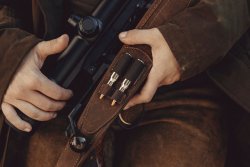
As the name suggests, these loads have been specially designed for use with short rifles, or rather rifles with short barrels. Whereas before the release of silencers for hunting with centerfire rifles, the standard barrel length started at around 56 cm, today shorter barrels are more in demand. When buying a new rifle, hunters now make sure that the gun remains sufficiently manoeuvrable even with the silencer screwed on. This is why barrel lengths of around 50 cm and shorter have become fashionable. The barrels of many existing guns have now also been shortened to such dimensions by gunsmiths. As the C.I.P. still uses measuring barrels of 60 cm in standard calibers and 65 cm in magnum calibers, cartridge manufacturers naturally still base their loads on these barrel lengths. However, this means that with very short barrel lengths, the full ignition of the propellant powder usually takes place in front of the muzzle in a short barrel. The result is a corresponding loss of power with sometimes considerable losses in terms of bullet velocity. In simple terms, the SHORT RIFLE cartridges from RWS compensate for these losses by burning earlier. RWS therefore also tests the SHORT RIFLE from 50 cm barrels, thus ensuring that this ammunition achieves higher velocities. Nevertheless, the loss of performance with ultra-short barrels of 42 to 48 cm cannot be fully compensated for – here some of the powder still burns in front of the muzzle. The manufacturer therefore recommends using rifles with a barrel length of 50 to 52 cm for the RWS HIT SHORT RIFLE.
Overview of all currently available calibers of factory cartridges with the RWS HIT bullet:
.22 Hornet, .222 Remington, .223 Remington, 5.6x50 R Magnum, .243 Winchester, 6.5 Creedmoor, 6.5 x 55 SE, .270 Winchester, .270 Winchester Short Magnum, 7mm Remington Magnum, 7 x 64, 7 x 65 R, .308 Winchester, .30-06 Springfield, .300 Winchester Magnum, 8 x 57 IS, 8 x 57 IRS, 8 x 68 S, 9.3 x 62, 9.3 x 74 R and 10.3 x 68 Magnum.
It should be noted at this point that the above-mentioned cartridges in .22 calibres – which also includes the 5.6x50 R Magnum – are varmint hunting cartridges. In these cartridges, the hollow point of the HIT bullet does not have the otherwise typical orange-colored plastic cap.
And in .308 Winchester, .30-06 Springfield, .300 Winchester Magnum, 8x57 IS and 9.3x62, the RWS HIT cartridge is also available in the special HIT SHORT RIFLE version. So that the hunter cannot confuse the cartridges from the HIT SHORT RIFLE series with those from the "normal" HIT series, RWS manufactures the HIT series with the usual brass cases, while the SHORT RIFLE cartridges come in nickel-plated brass cases and can be distinguished from the others by their shiny silver finish.
Accuracy test: RWS HIT and HIT SHORT RIFLE in .308 Winchester with and without silencer from a Benelli Lupo with 56-cm barrel and a 46-cm barrel Bergara BA13 TD
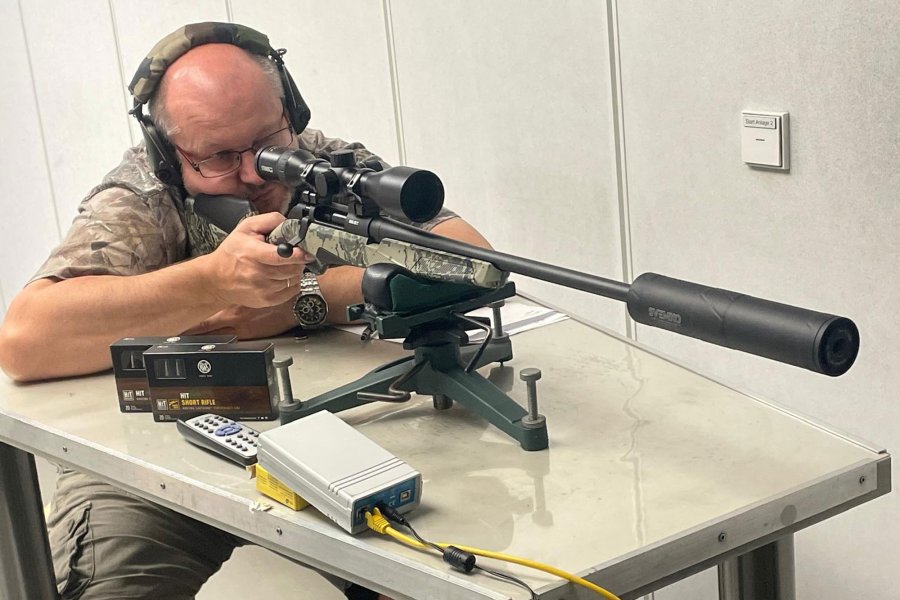
In our all4hunters.com test, this time we focussed on the accuracy of the factory-loaded RWS HIT and RWS HIT SHORT RIFLE, each with a 165-g (10.7 g) bullet in .308 Winchester. As our international team of testers had already been able to successfully convince themselves several times of the hunting effectiveness of the monolithic copper bullet, for example on sows, but also on roe deer – the author himself has been using the HIT from his .308 rifle for several years and has had thoroughly positive experiences with it – we focussed our attention here on the accuracy and consistent performance values of the two factory cartridge loads. To this end, we checked the performance of the RWS HIT and the HIT SHORT RIFLE from the new Benelli Lupo Be.S.T. Open Country bolt-action rifle with 56 cm barrel on the 100-m line, which had already proven to be an extremely accurate rifle in other tests. Also in the party was a somewhat older but still very reliable Bergara BA13 TD break-barrel rifle with a 46 cm barrel, which has already brought down many a buck. We also married the Benelli Lupo with the new Ranger 8 2-16x50 riflescope from Steiner and the Bergara with a 3-12x44 from the WHISKEY4 series from SIG Sauer Electro Optics. As the HIT SHORT Rifle was also on the test bench here, silencers were of course a must. For the Benelli this was a standard silencer for .30 calibers from the Norwegian manufacturer Svemko and for the Bergara a Sonic 45 silencer of Danish provenance from Nielsen for calibers up to and including 8 mm.
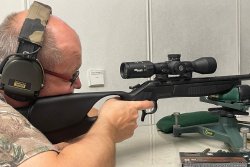
Parallel to the accuracy test, we also recorded the v2 values for all shots evaluated in the test using a Mehl BMC19 photoelectric sensor. All four cartridge types in the test showed that RWS had loaded the HIT cartridges very carefully and uniformly. There were only very slight deviations in the velocity values measured within each type, which only varied by a maximum of 5 m/s in each case. The best 5-shot grouping with the Bergara break-barrel rifle was achieved with the HIT SHORT RIFLE with the silencer screwed on and was a very respectable 26 mm. The average v2 here was 866 m/s, which corresponds to a bullet energy of 4,009 joules. In comparison, the Bergara fitted with a silencer and the HIT in the standard version produced a 48-mm group with an average v2 of 801 m/s (∼ E2 of 3430 J). This is absolutely usable for hunting. Without the silencer, the v2 values fell to an average value of 793 m/s (∼ E2 of J). As expected, however, the group diameter also shrank to 30 mm. In any case, the lower velocity values indicate that the full burning of the HIT powder in the short Bergara took place in front of the muzzle. A possible explanation for the larger group with silencer could be that this was still in the silencer or directly in front of it and thus caused greater turbulence, which then destabilised the projectile accordingly. However, this is contradicted by the result with the second longer-barrelled rifle in the test.
On the Benelli Lupo, too, the HIT group with the 30-mm diameter silencer was slightly larger than that without the silencer, which was an excellent 19 mm. For the sake of completeness, the speed and energy values should of course not be withheld: Without silencer these were 793 m/s (∼ E2 of 3,362 joules) and with 802 m/s (∼ E2 of 3,439 joules). However, the tightest group of five in our test was delivered by the HIT SHORT RIFLE from the Benelli rifle with screw-on silencer, which was 18 mm in diameter with an average v2 of 872 m/s (∼ E2 of 4,065 joules). This meant that it was on a par with the significantly slower HIT from the same rifle without the silencer in terms of accuracy.
all4hunters.com test summary of the RWS HIT and RWS HIT SHORT RIFLE in .308 Winchester
With the HIT and the HIT SHORT RIFLE, RWS has two very accurate lead-free factory cartridges in its catalog, which are becoming increasingly popular thanks to the now proven deformation bullet, which penetrates the game body with virtually no weight loss. In any case, the HIT is a real alternative for hunters looking for a lead-free and splinter-free copper-based "solid" bullet that still has excellent penetration and a high knock-down power despite being gentle on game. Although the manufacturer recommends using the HIT SHORT RIFLE preferably with guns with a barrel length of 50 to 52 cm, in our opinion it is also worth trying it with shorter barrels, initially on the shooting range and – if the desired accuracy is achieved there – also in the hunting ground. The latter, of course, always with a view to the game species to be hunted and, above all, the shorter operating distance of the bullet due to any loss of power.
Anyone who still can't quite get to grips with a monolithic copper bullet and is looking for a lead-free jacketed bullet that can be used at ranges beyond 200 meters should take a closer look at the RWS EVOLUTION GREEN. The team at all4hunters.com is already preparing a detailed test of the EVOLUTION GREEN for you.
You can also find out more about the RWS HIT bullet, the HIT and HIT SHORT RIFLE factory cartridges on this HIT product website in the RWS infotainment program.
The exact ballistic data and prices of the currently available HIT and HIT SHORT RIFLE bullets and the HIT bullets offered as reloading components can be found in the current RWS GmbH Hunting & Sport Shooting 2024/25 online catalogue.



